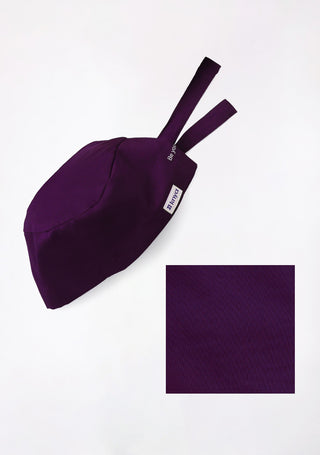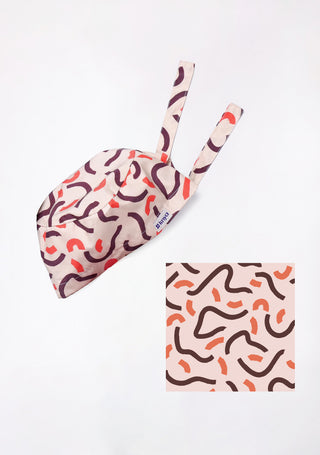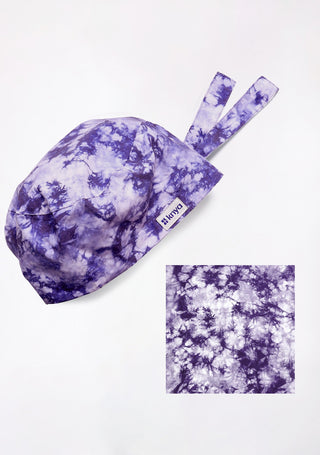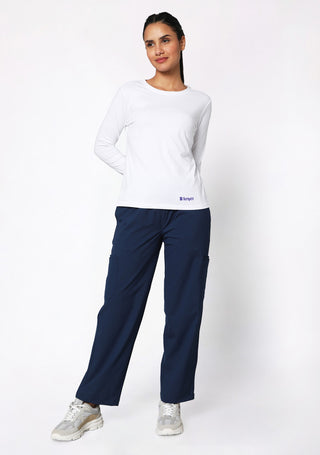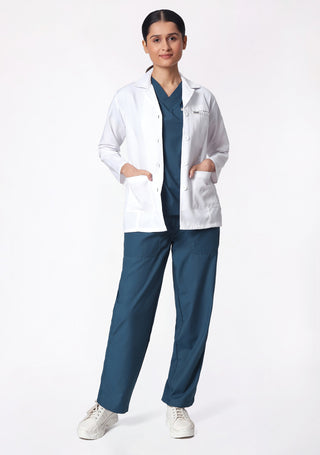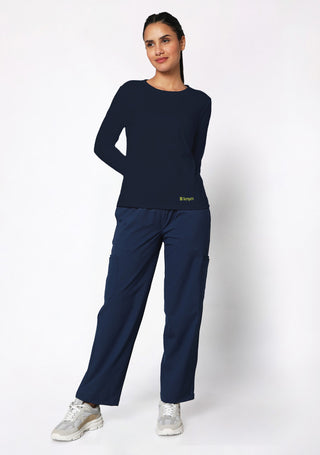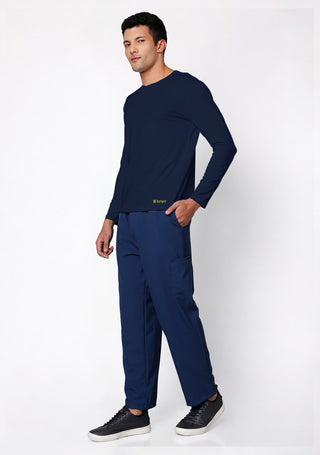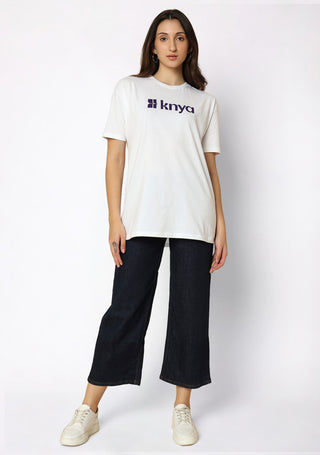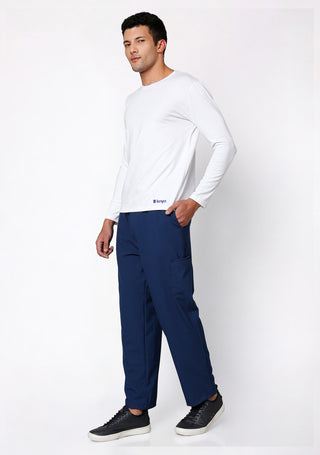A lab coat isn’t just another piece of clothing—it’s a symbol of professionalism, precision, and trust. Whether you’re a doctor, medical student, nurse, or researcher, a well-fitted lab coat enhances your confidence and comfort throughout the day. But getting that perfect fit requires more than guessing your size.
In this guide, we’ll walk you through how to measure for a lab coat accurately, so you can achieve the right balance of comfort, mobility, and professional appearance. And with Knya’s range of medical lab coats, finding your perfect fit has never been easier.
Looking for breathable and durable scrubs for women? Knya has you covered
Why Proper Lab Coat Measurements Matter?
A lab coat that fits right isn’t just about style—it’s about function. The right measurements ensure:
-
Freedom of movement: You can reach, stretch, and bend comfortably during long hours.
-
Professional appearance: A tailored fit creates a polished and confident look.
-
Safety: Proper sleeve and coat lengths prevent interference with instruments or contamination.
-
Comfort: A well-measured coat keeps you cool, unrestricted, and focused during demanding shifts.
A poor fit, on the other hand, can be distracting and uncomfortable—too tight and you lose mobility; too loose and it looks unprofessional.
Step-by-Step Guide: How to Measure for a Lab Coat
Before you start, grab a measuring tape and wear light clothing similar to what you’d wear under your lab coat (like scrubs or underscrubs). You may want someone to help for more accuracy.
1. Measure Your Chest
Wrap the tape measure around the fullest part of your chest, just under your arms. Keep it parallel to the floor and ensure it’s snug but not tight.
-
Tip: Add 2 inches to this number for ease of movement.
This measurement helps determine the coat’s body fit—neither too tight nor baggy.
2. Measure Your Waist
Find your natural waistline (the narrowest part of your torso). Wrap the tape around comfortably—don’t suck in your stomach or tighten the tape too much.
This measurement ensures that your lab coat sits properly around the midsection, especially for tailored styles.
3. Measure Your Hips
For coats that extend below the hip, measure around the fullest part of your hips. This helps ensure the bottom of the coat fits comfortably and doesn’t pull or flare awkwardly when you move.
4. Measure Your Shoulders
Place the tape from the outer edge of one shoulder to the other, straight across your back.
Shoulder measurement determines how well the coat aligns with your natural shoulder line—crucial for a professional fit.
5. Measure Your Sleeve Length
With your arm slightly bent, measure from the shoulder point down to your wrist bone.
This ensures your sleeves are long enough to protect your arms but not so long that they interfere with your work.
6. Measure Your Coat Length
Decide how long you want the lab coat to be. Measure from the top of your shoulder (near the neck) down to your preferred coat length.
-
Short-length coats: Typically end at the mid-thigh (popular among medical students).
-
Knee-length coats: Common for doctors, researchers, and professors.
-
Full-length coats: Offer maximum protection for laboratory or industrial use.
7. Double-Check for Fit Preference
Consider how you like your lab coat to fit—regular, slim, or relaxed. Knya lab coats come in different fits to match your comfort and style preference.
While scrubs are essential for daily duties, lab coats offer the added protection and authority needed in clinical environments
Pro Tips for a Perfect Lab Coat Fit
-
Try it over scrubs: Always fit your lab coat over your workwear to ensure proper layering.
-
Check arm mobility: Lift your arms or reach forward; the shoulders shouldn’t pull tight.
-
Mind the back vent: If your coat has one, ensure it lies flat without flaring when you walk or sit.
-
Choose the right fabric: Opt for breathable, stretchable, and wrinkle-resistant materials like Knya’s performance fabrics for maximum comfort.
- Use size charts: Every brand has slightly different measurements. Always refer to Knya’s official size chart when ordering.
How Knya Ensures the Perfect Fit
At Knya, every lab coat is crafted to combine professional design with ergonomic comfort. The coats are tailored to suit long working hours, providing flexibility and breathability while maintaining a sharp, clean look.
Knya offers:
- Multiple fit options (classic, modern, and tailored)
-
Size inclusivity for all body types
-
Premium fabrics for all-day comfort
-
Precision stitching for durability
-
Easy maintenance with wrinkle-resistant and machine-washable materials
Each Knya lab coat is designed keeping real healthcare professionals in mind—balancing mobility, performance, and elegance.
Common Fit Issues and How to Avoid Them
| Fit Problem | Cause | Solution |
| Tight across shoulders | Wrong shoulder measurement | Recheck shoulder width and choose a size up |
| Sleeves too long | Incorrect arm position during measurement | Bend arm slightly and measure again |
| Coat flares out | Hip measurement too small | Add extra ease at hips before ordering |
| Gaping front | Chest measurement too small | Ensure 2-inch ease added |
| Restrictive when sitting | Coat length too short or waist too tight | Reassess coat length and waist fit |
These small details make a big difference when it comes to comfort and confidence during work.
Why Choose Knya for Your Lab Coat?
Knya stands out for combining function, fit, and finesse in every medical garment. Each Knya lab coat is designed to help healthcare professionals look polished while staying comfortable during long hours. Whether you’re a student getting your first lab coat or a professional upgrading your wardrobe, Knya ensures that your uniform fits perfectly, feels comfortable, and lasts long.
Conclusion
A perfectly fitted lab coat is more than a uniform—it’s a reflection of your professionalism and confidence. Knowing how to measure for a lab coat helps you find a fit that complements your role and supports your daily routine. With precise measurements and high-quality options from Knya, you can ensure your lab coat feels as good as it looks.
The next time you choose a lab coat, measure right, select smart, and wear it with pride—because in the world of healthcare, fit and function go hand in hand.

